How to look after a high-pressure cleaner

Whether a high-pressure cleaner for professional or domestic use, carrying our proper routine maintenance is always important. Thoroughly cleaning the components, following the indications in the instruction
manual, and always working in safe conditions, are three key factors in preserving its correct operation and high performance.
If you've bought one or are thinking about doing so, here’s how to properly maintain your high-pressure cleaner and make sure it always performs at its best.
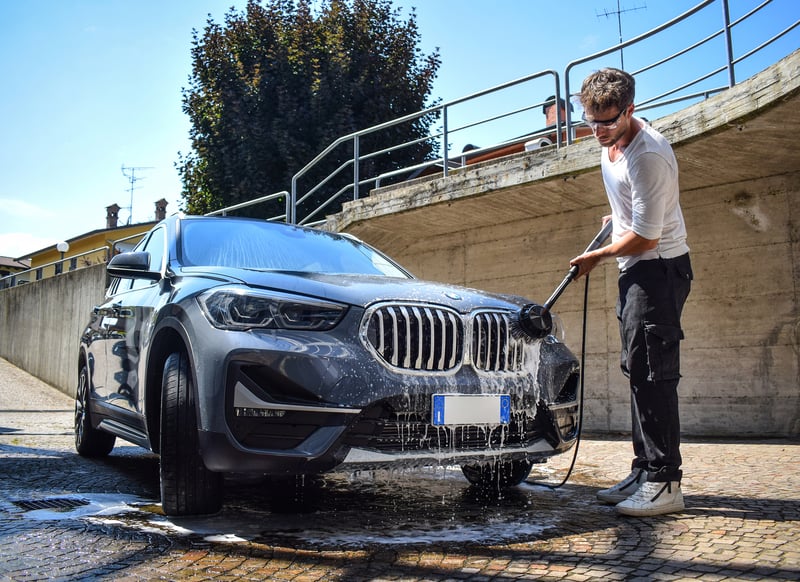
How does a high-pressure cleaner work?
One of the most important things in order to carry out proper maintenance on your high-pressure cleaner is to know its standard characteristics.
There are two types of high-pressure cleaners:
- Hot water high-pressure cleaners, ideal for removing oily stains, grease, encrustations, and for deep cleaning. By turning the boiler off, it can used as a cold water version;
- Cold water high-pressure cleaners, which are more compact and easy to handle, exploit the water pressure to clean all types of surfaces thanks to the aid of high-pressure nozzles and numerous optional applicable accessories.
In all models, the high-pressure cleaner is fed with cold water from a source of water (which in hot water models is then heated by the internal coil), which is filtered and then introduced into the pump driven by the electric or internal combustion motor. The pump generates the high-pressure jet which after passing through the bypass valve enters the flexible hose, to then enter the gun and subsequently the lance, before exiting through the nozzle.
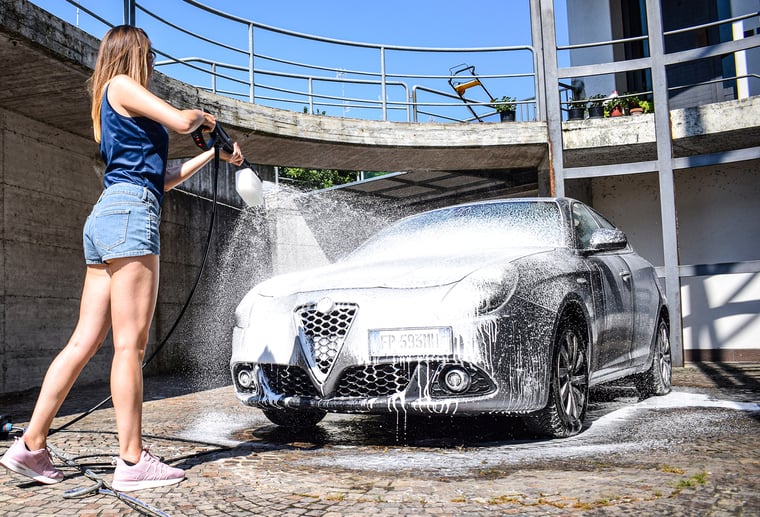
The high-pressure jet can be combined with a detergent located:
- Upstream, thus limiting the pressure drops, but the foam effect could also be limited depending on the type of detergent used (in hot water high-pressure cleaners, a suitable chemical product is recommended);
- Downstream, that is, introduced after the distribution pump, thus guaranteeing excellent foaming.
The use of detergent, especially ideal in cold water models, allows even deeper cleaning of the area. Combined with a specific detergent, it allows the complete removal of mould, moss, fungi, droppings, and other organic and non-organic substances, achieving excellent results in just a few minutes and with very little effort.
Using a high-pressure cleaner in safe conditions
High pressure cleaners are complete tools, ideal for cleaning any type of surface such as pathways, courtyards, plastic garden furniture, wooden surfaces, cars, motorbikes, bicycles, patios and more. This is possible thanks to the many included accessories such as nozzles, lances, guns, pipe cleaning probes, floor cleaners, and also thanks to the actual features of the tool itself, allowing regulation of the jet and configuration of the high-pressure cleaner based on real user needs.
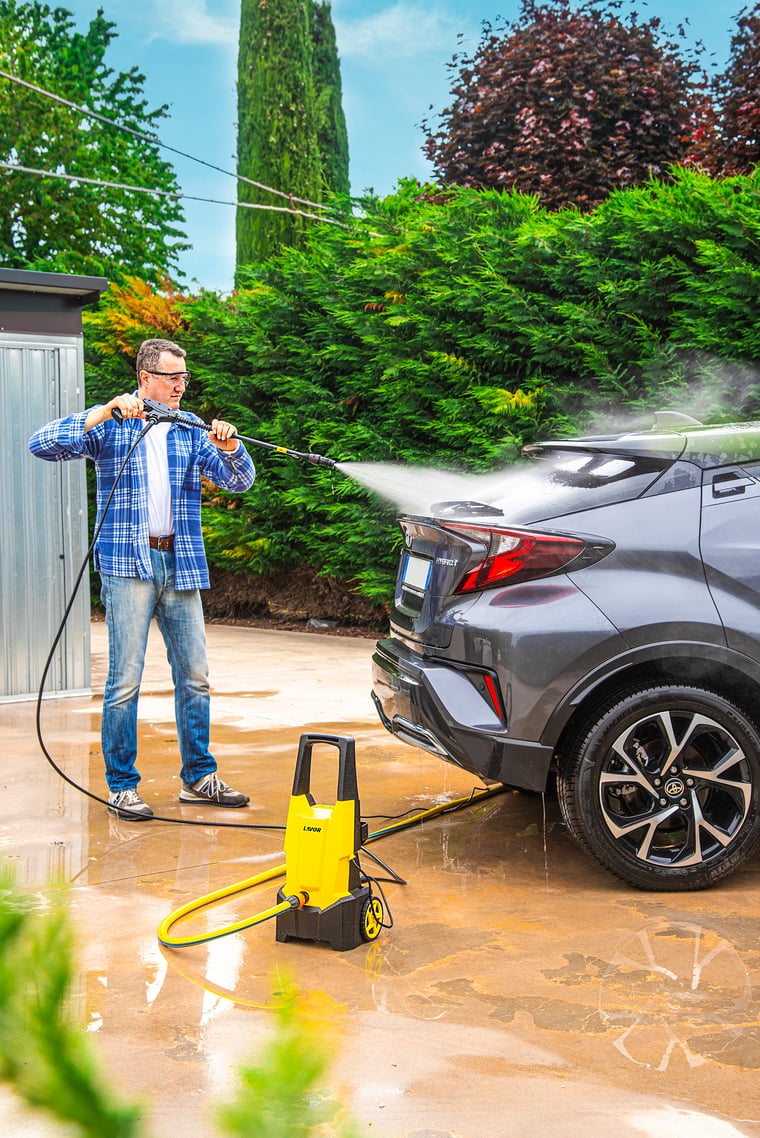
Its performance, however, goes hand in hand with correct and safe use, making it necessary to follow a few basic rules:
- Always use the high-pressure cleaner in safe conditions. Never direct the jet towards people or animals and always follow the local safety rules and regulations;
- Read the instruction manual available in the packaging or the digital version in the product data sheet, available at lavor.com. In the manual, you’ll find all the specifications of the model you've purchased, which will help make sure you always get the most out of your high-pressure cleaner;
- Check the input water temperature, taking note of what’s indicated in the manual. Never feed the high-pressure cleaner with water at a temperature higher than the suggested one.
- In hot water models, never touch the boiler and the hot parts, and avoid the use of accessories not compatible with high temperatures. After use, run the high-pressure cleaner for a few minutes on the cold water setting;
- Never use the models with internal combustion motor indoors and near people or animals, the exhaust gases could be harmful if not properly dispersed;
- Be careful of the electrical parts. Before performing any type of maintenance, check that the high-pressure cleaner is not connected to any sources of electrical power;
- Always use common sense. Never use the high-pressure cleaner under the effect of medication, alcohol, drugs, or any other substance that might inhibit your control;
- Respect the environment by not using more detergent than required, and opting for biodegradable detergents with a low environmental impact.
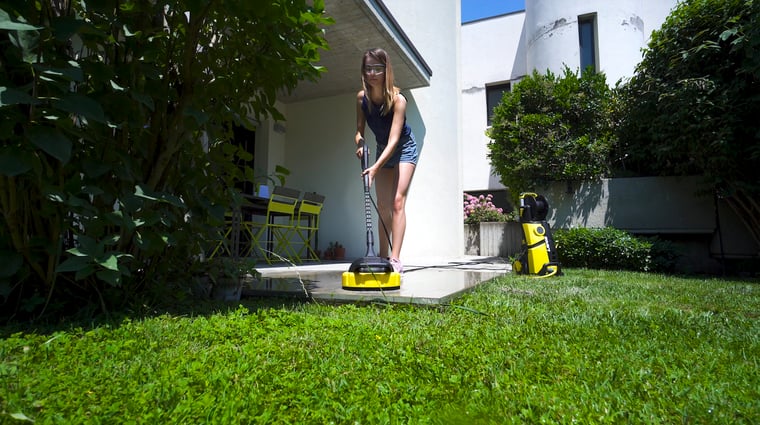
How to perform routine maintenance on your high-pressure cleaner
Carrying out routine maintenance on your high-pressure cleaner will ensure you always get the most out of this tool and avoid the need for burdensome repair works, thus saving money.
Taking care of your high-pressure cleaner is very simple:
- After each use, check the condition of all components such as the gun, lance, hose, power cord, fittings and any accessories you might be using. In case of damage, contact a specialised technician to have it repaired immediately. Acting fast will avoid higher costs, saving you money;
- After each job, always empty the internal water circuit by disconnecting the supply hose and turning the high-pressure cleaner on for about 15-20 seconds (not any longer to avoid overheating damage), so as to flush out any residual water and prevent the formation of limescale, which could form during periods of non-use, and which is the number one enemy of seals;
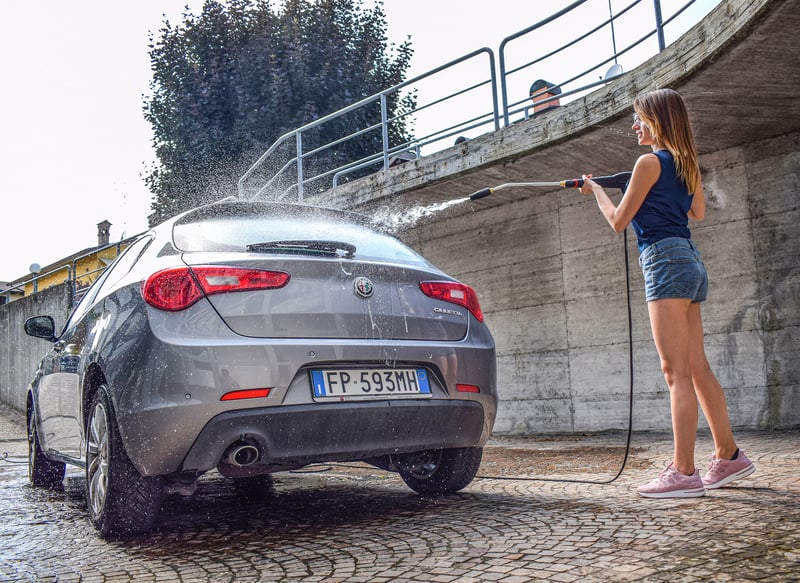
- Regularly clean the filter (if necessary) using water and anti-limescale detergent, and the nozzles using the supplied needle. In high pressure cleaners with control devices, we recommend checking the oil level and topping it up when too low with respect to the values indicated in the manual;
- For hobby high-pressure cleaners, depending on the frequency of use, the condition of the wear parts/components should be regularly checked, for example the O-rings, sealing gaskets (water/oil), and filters;
- For professional high-pressure cleaners, every 3 months/200 hours of use it is recommended to contact a specialised technician for an overall inspection of the high-pressure cleaner, including the water circuit, pump fixing, filters, nozzles, and to check the oil level in the pump. Every 6 months/500 hours of use a specialised technician must be contacted to check the intake and delivery valves, regulation valves, and to replace the filters, nozzles, and oil in the pump.
Following these simple rules, you can be sure of the continued high performance of your high-pressure cleaner for domestic or professional use, making the most of its jet and pressure to obtain the best results, quickly and with minimal effort.

-1.jpg)
-1.jpg)